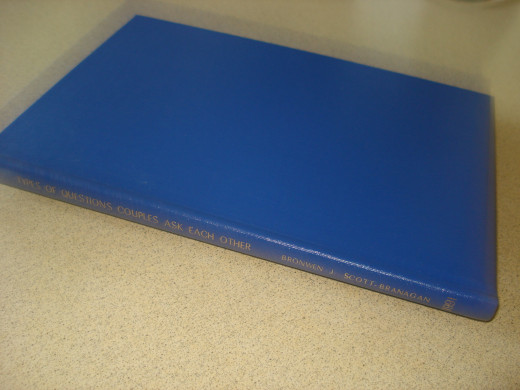How to Write a Formal Report
The Three Main Elements of a Formal Report
Writing a formal report, research paper, thesis or dissertation is fairly straight-forward if you have the right information and understand the need to adhere to a few rules pertaining to the layout. The three main elements that are the basics necessary for building an acceptable report include the following:
- The Preliminaries: This includes all the information that comprises the front matter.
- The Text: This is the important part of the work and what you know about best.
- The Reference Material: This can be looked upon as being the back matter, but in fact it also involves insertions in the text, footnotes and endnotes.
The Preliminaries
The first page of any formal report, high school or college paper is the title page. This should include:
The Title: Keep it precise and to the point so it informs the reader what the report or dissertation is about. It is what the reader sees first, so it needs thoughtful planning.
- Example of a Wordy Title: A STUDY OF THE IMPLICATIONS OF THE IMPROVEMENT OF PUBLIC TRANSPORTATION SERVICES IN MELBOURNE AND HOW IT WOULD LEAD TO GREATER AUGMENTATION OF LOSS MARGINS ALREADY BEING MET BY GOVERNMENT SUBSIDY AND THEREFORE TO HIGER TAXATION FOR ALL VICTORIANS
- Example of a Revised Title: THE ECONOMIC IMPLICATIONS OF IMPROVED PUBLIC TRANSPORT SERVICES IN MELBOURNE
The Name of the Intended Recipient: If it is for a college or university, make sure you put the name of the faculty, the institution, the degree sought; if it is a term paper, remember to give the module name and the code.
The Name of the Author: Give the full name of the author or candidate.
The Date: Depending on the purpose of the report, you will need to add the date of submission, including the year. If it is a dissertation the month and year in which the degree is to be granted is usually required.
The Abstract
Not all institutions require an abstract, but this can be very useful, both for the writer and the recipient. The discipline of writing an abstract can help the author of the report to clarify thoughts and the direction of the paper. It is helpful for the recipient as it acts as a summary of the entire paper in a short, one or two paragraph statement.
An abstract differs from an introduction in that it covers all the main points of the paper in a formal manner and as briefly as possible.

The Text
The text or body of the report is usually presented in chapters. The chapters are basically divided into four categories: planning, investigation, discussion and conclusion.
1. PLANNING: The planning section of the paper includes the introductory chapters and a good introduction helps to give a good impression of the standard of the rest of the report. It will usually include the following:
1.1 A statement of the problem:
1.1.1 This is usually posed as a question that focuses on what the problem is about. It includes analysis of the problem and its relevance or significance. It specifies the limits of the problem and provides sources of information and the length of time involved.
1.1.2 The establishment of the theoretical framework, including basic assumptions, underlying concepts, the theory behind the design of the study and an explanation of terms that will be used.
1.1.3 A review of literature related to the study and this may need a separate chapter.
1.1.4 The design or method of the research and the procedures involved; this may also be a separate chapter as it may need a step by step guide, including the care and precautions taken during the research.
2. INVESTIGATION: This section of the paper will concentrate on analysis of the relevant results and it needs to be clear and precise.
2.1 The data may be presented in the form of diagrams and tables; it should be clearly annotated. If there is subsidiary data or a large amount, it may be added in an appendix.
2.2 The data is analysed and summarised briefly, but not evaluated at this stage.
3. DISCUSSION: This section of the paper is where the findings or results are interpreted.
3.1 The discussion presents an evaluation of the data based on the implications of the findings, especially in relation to the original hypotheses presented in the introduction.
3.2 The findings are discussed in relation to published research reviewed in the planning section of the paper.
3.3 Evaluate whether the theoretical framework had any errors that influenced the results.
4. SUMMARY: The summary brings all the elements of the paper or thesis together. It includes the following:
4.1 A brief description or repetition of the problem and the main purpose of the study.
4.2 The research methodology employed.
4.3 The findings and whether the study was successful in achieving its main aim.
4.4 The conclusions: The success of the study, or otherwise, in achieving its goal, what has been learned from it and how it could have been improved.
4.5 The recommendations.
The Reference Material
The end matter contains any appendices that may show additional data, tables or charts, endnotes if these are used rather than footnotes, and the main reference material, the Bibliography.
Almost all institutions, whether they are high schools, colleges or universities have their own rules for the way references are set out in the footnotes, endnotes and Bibliography.
The Table of Contents
The Table of Contents belongs in the Preliminary section or front matter of the paper but it needs to remain one of the last things to do.
Constructing a Table of Contents involves pagination, which may have been added automatically as the paper progressed. Once the paper has been revised and edited carefully, the page numbers need to be checked to ensure that any tables or other data presented is all on the one page, including captions, then the Table of Contents can be inserted. When it is completed, check carefully that the page numbers really refer to the correct pages in the report.
As well as it being necessary to follow the rules for the writing of a formal report, these suggestions can also be helpful if they are utilised as the framework on which to design that report.
Extra Helps for Report Writing
- Report Writing: How to Use Tables, Figures and Computer Materials
How to use tables, figures and computer materials in report writing can be confusing. This article helps to show the difference between the various support materials and underlines the importance of only using relevant materials. - Proper Use of Quotation Marks
There are rules to follow when using quotations in writing. Plagiarism is not only a bad thing to do, it is illegal. Obtaining copyright can be difficult and many of these requirements can absorb much time in following them up, but it is necessary. - How to Write Footnotes in a Report
Includes the reasons for writing footnotes, how to cite references when citing books, and explanation of terms used in footnote/endnote citation and some useful extra hints on this often overlooked necessity for the student and the serious writer.




